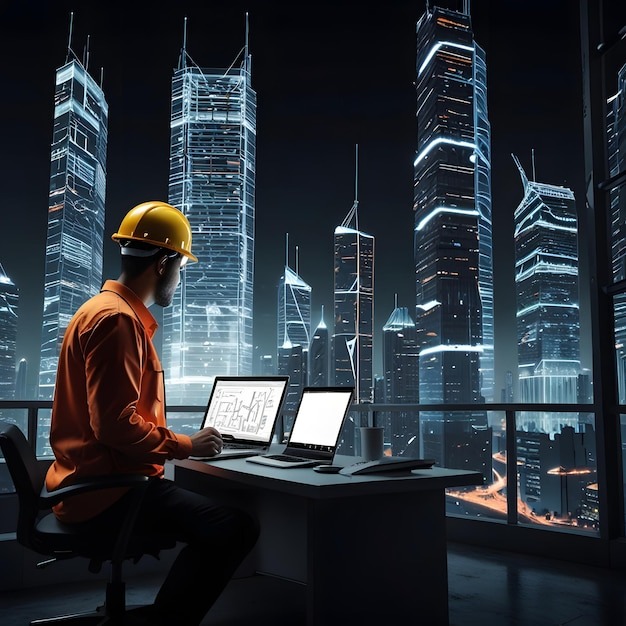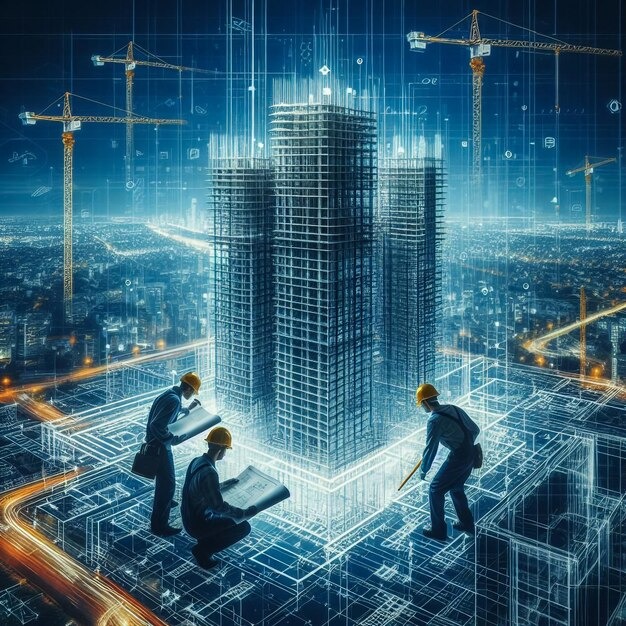The Future of Smart Buildings

The future of smart buildings is driven by advances in technology and sustainability, transforming how we design, operate, and interact with spaces. These buildings will feature advanced systems for automation, energy efficiency, and user experience. Here are some key elements of the future of smart buildings:
-
Automation and IoT Integration: Smart buildings will be interconnected through Internet of Things (IoT) devices, allowing seamless communication between various systems such as lighting, HVAC (Heating, Ventilation, and Air Conditioning), security, and even parking. These devices will enable real-time monitoring, control, and data analysis to optimize performance.
-
Energy Efficiency: Future buildings will prioritize energy-saving technologies, using smart sensors to adjust lighting, heating, and cooling based on occupancy. Solar panels, energy storage systems, and smart grids will play a crucial role in reducing energy consumption and promoting sustainability.
-
Sustainable Materials: The construction of smart buildings will focus on sustainable and eco-friendly materials. Green roofs, energy-efficient windows, and renewable construction materials will be commonly used to reduce carbon footprints.
-
AI and Machine Learning: Artificial intelligence (AI) will be central to building management, with machine learning algorithms analyzing data from sensors to optimize building operations and predict maintenance needs. These technologies will also provide personalized experiences for occupants, adjusting environmental conditions to their preferences.
-
Enhanced Security: Smart buildings will feature cutting-edge security systems, including facial recognition, biometric authentication, and smart surveillance cameras. These technologies will ensure safer environments for residents and businesses, while also integrating with emergency systems for faster responses.
-
Health and Wellbeing: The future of smart buildings will focus on improving occupant health by monitoring air quality, temperature, humidity, and lighting. These factors will be automatically adjusted to create comfortable and healthy living or working environments.
-
Connected Workspaces: In commercial smart buildings, office spaces will be designed to support remote work, collaboration, and flexibility. Advanced video conferencing tools, smart meeting rooms, and automated scheduling will redefine the workspace.
-
Data-Driven Insights: With sensors collecting massive amounts of data, smart buildings will generate valuable insights that can be used for maintenance planning, cost reduction, and space optimization.
As technology continues to evolve, smart buildings will become more intuitive, adaptive, and efficient, paving the way for more sustainable, intelligent, and comfortable urban living environments.
The future of smart buildings holds immense promise, transforming the way we live, work, and interact with our environment. With advancements in automation, IoT, AI, and sustainability, these buildings will not only enhance comfort and security but also contribute to significant energy efficiency and environmental sustainability. The integration of smart technologies will create spaces that are more adaptive, user-friendly, and optimized for the well-being of their occupants. As technology continues to evolve, smart buildings will play a crucial role in shaping smarter, more sustainable cities, improving both quality of life and the planet’s future.



